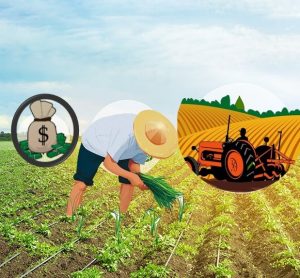Abstract
Agricultural productivity in Kenya, as in many developing countries, is significantly affected by rainfall variability. The reliability of the rain for agricultural purposes has reduced in the recent years due to climate variability. In the study area, there is a continued trend of more frequent and intense climate related disasters which is expected to have significant impacts on the livelihood activities. Most studies on the impact of climate variability on farming practices and the response strategies have mainly focused on arid and semi-arid regions of Kenya and have mainly used community level data. Information on actual dynamics of rainfall variability at household in high potential areas like Kisii is scanty. This study therefore aimed at determining the relationship between households’ characteristics and perception of effect of rainfall variability on farming practices among the households in Kisii Central Sub County. Structured questionnaires were administered to a proportionate random sample of 120 households from the four administrative divisions of the Sub County. Data from questionnaires were also complemented by oral interviews with key informants from Water Resources Management Authority (WRMA), Kenya Agricultural Research Institute (KARI) (currently Kenya Agricultural and Livestock Research Organization (KALRO), Ministry of Agriculture, FGDs and secondary data. Descriptive statistics as well as inferential statistics technique have been used to analyze data with the help of Statistical Packages for Social Sciences (SPSS version 20). Inferential statistics technique employed the use of Chi-square (χ2) test to analyze data. To make reliable inferences from the data, all statistical tests were subjected to a test of significance at coefficient alpha (α-level) equal to 0.05. There existed a statistically significant relationship between the mixed farming, mulching/shade and technology adoption (e.g. greenhouses) adaptation strategies with gender. Most of the households practicing crop diversification (growing of more than one type of food/cash crop), mulching/shading of crops and modern technology such as green houses were middle aged (between 31-40 years). Irrigation practice was most associated with household heads with secondary and tertiary level of education while use of chemicals/ herbicides was mainly associated with household heads with tertiary level of education. This study recommends that the government (County and national) as well as development partners who have a stake in climate change and adaptations should endeavour to strengthen the adaptive capacity of vulnerable populations and of the agriculture sector as a whole in the study area. There is also need to support households through policies that help them get better access to hybrid seeds that are bred to match with the prevailing rainfall variability.
Key Words— Households’ Characteristics, Perception, Rainfall Variability, Farming Practices in Kisii Central Sub County, Kenya
Don’t Gamble with your Academic Knowledge when Publishing
Publish your original Research Paper with us today for Free!Submit your manuscript in our next issue by clicking Submit Manuscriptbutton below.
Manuscript Submission Portal
Rigorous Journal of Agricultural Sciences (RJAS) is currently accepting manuscripts for publication – FREE OF CHARGE. Our peer-review process is highly rigorous leading into high quality research materials.
Submit your manuscript by clicking on the link below:
Talk to us …
Are you unsure which specific journal is suitable for your research paper? Talk to one of our editorial team through WhatsApp or Skype now…


